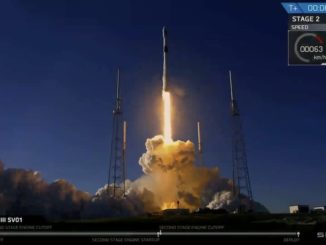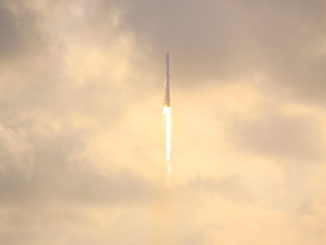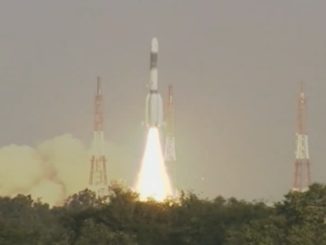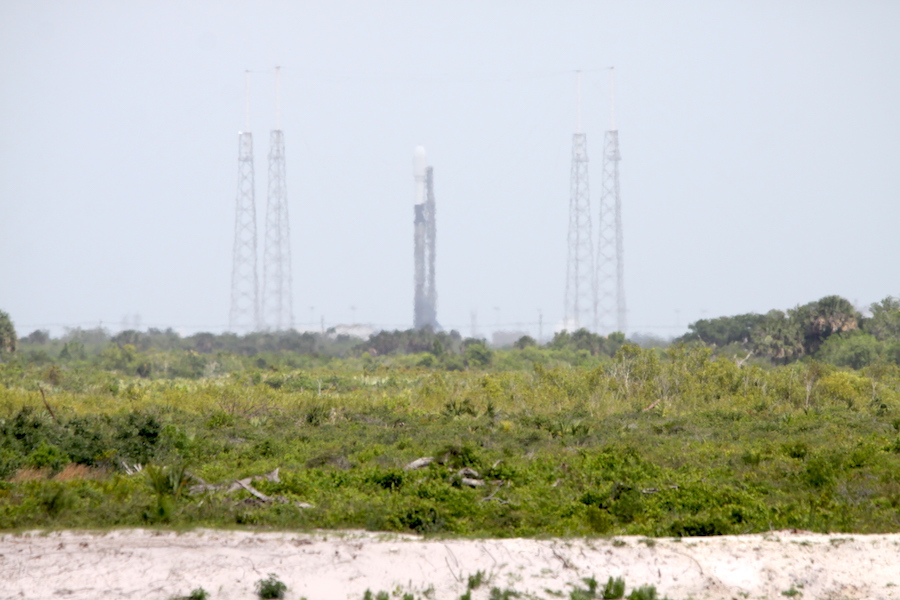
Days after launching astronauts for the first time, SpaceX is set to resume a speedy cadence of satellite launches Wednesday night with liftoff of a Falcon 9 rocket carrying the company’s next batch of Starlink broadband relay stations.
A Falcon 9 rocket is scheduled for takeoff Wednesday, likely around 9:25 p.m. EDT (0125 GMT Thursday), from Cape Canaveral’s Complex 40 launch pad. A weather forecast issued by the U.S. Space Force’s 45th Weather Squadron on Monday indicates there is a 70 percent probability of favorable conditions for launch Wednesday night.
The weather forecast lists a 61-minute launch window for the Starlink mission opening at 8:55 p.m. EDT (0055 GMT), but SpaceX typically targets liftoff in the middle of the window for Starlink flights.
SpaceX has launched 420 Starlink satellites on seven dedicated Falcon 9 launches since May 2019, with each rocket carrying 60 Starlink spacecraft. This week’s launch is expected to loft around 60 additional Starlink satellites, which each weigh about a quarter-ton.
This eighth launch devoted to the Starlink network was previously scheduled for mid-May. SpaceX delayed the launch after Tropical Storm Arthur brought high winds and rough seas to the downrange recovery area northeast of Cape Canaveral in the Atlantic Ocean, where SpaceX’s drone ship needs to be positioned for landing of the Falcon 9 rocket’s first stage booster.
Once Tropical Storm Arthur forced the initial launch delay, SpaceX decided to keep the Starlink mission on the ground until after the company launched the Crew Dragon spacecraft from nearby pad 39A at the Kennedy Space Center. The Crew Dragon launched Saturday with NASA astronauts Doug Hurley and Bob Behnken, the first crewed mission to launch into orbit from U.S. soil since the retirement of the space shuttle in 2011.
SpaceX’s drone ship “Of Course I Still Love You” was deployed in the Atlantic Ocean for the landing of the Falcon 9’s first stage booster after the Starlink launch. The drone ship was later used for the landing of the Falcon 9 first stage after the Crew Dragon launch.
Another drone ship in SpaceX’s fleet — named “Just the Read Instructions” — has completed upgrades and departed Port Canaveral, Florida, to support the booster landing for the next Starlink launch. Meanwhile, SpaceX’s “Of Course I Still Love You” recovery vessel is on the way back to Port Canaveral with the first stage recovered after the Crew Dragon launch.
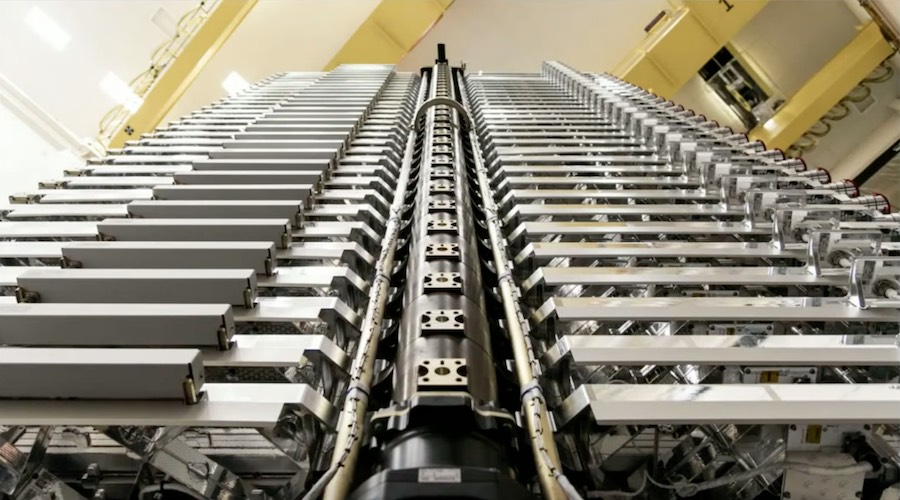
The primary weather concerns for Wednesday night’s launch attempt are with potential violations of the thick cloud and cumulus cloud rules.
“By late Wednesday, a mid-level disturbance from the Gulf of Mexico will begin to approach the area, steadily increasing moisture and cloud cover heading into the nighttime hours,” the 45th Weather Squadron said. “Models have trended slightly faster with the returning moisture over the last several days, but some dry air is still expected to linger in the mid-levels.
“The main concerns will be the thick cloud layer rule due to upper level clouds streaming in from the west, and the cumulus cloud rule due to the potential for isolated showers.”
The Falcon 9 rocket for the next Starlink mission completed a hold-down test-firing of its Merlin main engines May 13 on pad 40.
The first stage assigned to this week’s launch is a veteran of four previous flights, landing on a SpaceX drone ship after each mission. The booster first flew from Cape Canaveral in September 2018 with a Telesat communications satellite, then launched again from Vandenberg Air Force Base in California in January 2019 with 10 Iridium voice and data relay payloads.
Its third flight occurred last May on the first dedicated Falcon 9 launch for the Starlink program. Most recently, the booster launched Jan. 6 from Cape Canaveral and again landed on a SpaceX drone ship offshore.
If the booster lands after Wednesday night’s launch, it will mark the first time SpaceX has recovered a Falcon 9 first stage for a fifth time.
SpaceX aims to launch around 1,000 more Starlink satellites later this year and next year to begin offering worldwide Internet service. Initial beta testing of the Starlink network could begin later this year, beginning in higher latitude regions like Canada and the northern United States, the company says.
Thousands more Starlink spacecraft could launch in the coming years to meet global demand, according to SpaceX.
A new sunshade to reduce the brightness of the Starlink satellites will debut on this week’s launch. The umbrella-like visor will block sunlight from reaching the shiniest parts of the flat-panel spacecraft, making them less visible from the ground.
Scientists have raised concerns that thousands of Starlink satellites — as envisioned by SpaceX — could impact astronomical observations through ground-based telescopes. So far, SpaceX has answered with an experimental darkening treatment that offered some reduction in visibility, and the company says it is changing the orientation of the Starlink satellites during the period shortly after launch to turn their solar panels away from the sun.
The sunshade should provide a more significant dimming effect, SpaceX says.
SpaceX plans two more Falcon 9 launches later this month after this week’s flight to deliver more Starlink satellites into orbit from Cape Canaveral.
Email the author.
Follow Stephen Clark on Twitter: @StephenClark1.

